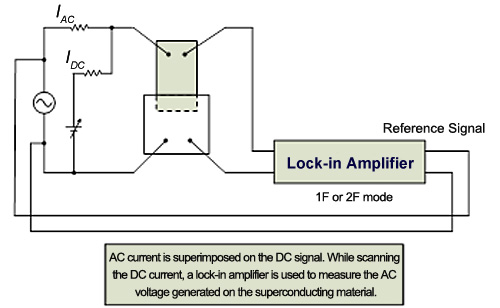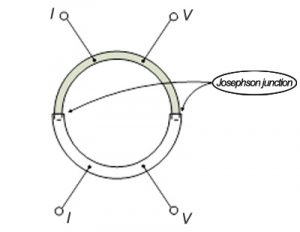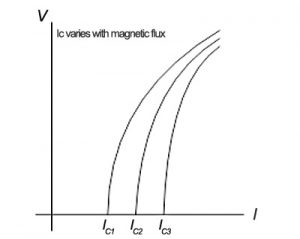At present, there are many researches aimed at superconductivity. Generally speaking, superconducting experiments need to be carried out at extremely low temperatures. At this time, while measuring the resistance of the sample, confirm whether the sample has reached a superconducting state. However, the current when measuring resistance will cause Joule heating of the sample, which will affect the accuracy of temperature control. Therefore, the measurement current must be very small. Since the resistance value of the sample itself is very low, the generated voltage is very weak, which also brings difficulties to the detection.
In the superconducting state, a very weak alternating current flows through the sample. The lock-in amplifier can be used to detect the weak AC voltage generated by the sample to measure the resistance of the sample. Since the signal is AC, the influence of thermoelectromotive force can be avoided, and the test error can be reduced during low resistance measurement.
An important application of superconducting materials is the Josephson junction. The Josephson junction is composed of a vaporized aluminum steel strip with an oxide film. When cooled below 1 K, the current-voltage characteristics shown in Figure 1 can be obtained.

Figure 1 I/V characteristic of Josephson device
In the case of a non-linear sample, superimpose a certain AC current on the DC current as shown in Figure 2, and then use the 1F mode of the lock-in amplifier to measure the generated AC voltage while changing the DC current to determine the resistance value (1st order differential characteristic). If you use the 2F mode to measure, you can measure the pole-changing point (second-order differential characteristic) of the resistance value with high sensitivity.

Figure 2 Measuring the differential resistance of superconducting materials
Two Josephson junctions are connected in parallel to form a sensor as shown in Figure 3. When the magnetic field lines in the through hole are changed, the changing current-voltage characteristics as shown in Figure 4 can be obtained. The use of this characteristic can be made into a very sensitive magnetic sensor. It is called Superconducting QUantum Interference Device (SQUID), which can be used to detect the fluctuations of the magnetic field or geomagnetism generated by the human brain.

Figure 3 SQUID sensor structure

Figure 4 Characteristics of magnetic flux passing through the SQUID sensor
A well-known effect in superconductivity is the Meissner effect (completely diamagnetic). In the state of this effect, the magnetic field lines cannot pass through the sample in the superconducting state, but will be excluded from the superconductor. This state can be confirmed by the mutual induction method. The mutual induction method is composed of two sets of primary coils and secondary coils, the winding directions of which are opposite to each other. When the sample is not placed, the signals on the secondary side are the same in magnitude, but opposite in phase, and they cancel each other out and no signal appears.
If a sample is placed in a set of coils at this time, the balance of the magnetic flux of the two sets of coils will be broken, and a signal will appear on the secondary side. Then, if the sample enters a superconducting state, the signal on the secondary side will cancel out again and become 0, so that the Meissner effect can be confirmed. At this time, even more subtle changes can be captured by using a lock-in amplifier.
Related products:
SE1022D DSP lock-in amplifier (1 mHz to 102 kHz, dual channel)
SE1022 DSP lock-in amplifier (1 mHz to 102 kHz)
SE2031 DSP lock-in amplifier (1 mHz to 3 MHz)
SE1201 DSP lock-in amplifier (50 mHz to 120 kHz)



